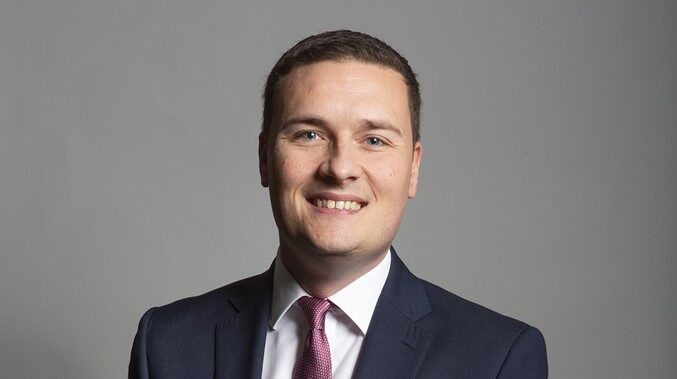The Labour government is proposing a major overhaul of how general practice doctors operate and the targets they are measured against along with introducing an additional £889m funding.
Incentives are being offered for doctors to focus on preventative care and to ensure vulnerable patients see the same doctor every time, while GPs will be required to become more digitally accessible.
The proposals also cut the number of targets that doctors will have to meet from 76 to 44 with the intention of creating more time for patient care and include the £889m of extra funding.
The measures are part of the government’s Plan for Change to get more patients through the NHS front door and bring back the family doctor.
They also fall under the new GP contract for 2025-26 which is now out for consultation with the British Medical Association (BMA) General Practice Committee.
From sickness to prevention
One of the key aims of the plan is to shift care from sickness to prevention:
The government is proposing to provide financial incentives to reward GPs who go above and beyond to prevent the most common killers like heart disease.
It said doctors will benefit if they ensure that as many patients as possible with high blood pressure are identified and treated as soon as possible, before they end up in hospital.
And it wants to shift care from analogue to digital, proposing to require GPs to ensure patients can contact their surgery via electronic communication throughout core hours, as well as in person or over the phone, helping more people book an appointment or speak to a doctor.
Currently, GPs must perform against a range of targets to receive certain financial incentives.
The overhaul would significantly reduce the number of targets from 76 to 44, which the government said would free GPs up to spend more time with their patients.
Positive starting point
The BMA said GP practices across the country had been “frantic with worry” about the impact of the rise in National Insurance Contributions (NICs) from April and it had shared data with government to make clear just how grave the situation was with some practices facing closure.
GP committee England chairwoman Dr Katie Bramall-Stainer said the organisation was eagerly awaiting details regarding the government’s proposals.
“Hopefully today’s news provides an important lifeline for our more than 6,000 practices, and we are committed to reaching consensus around the management of the additional business pressures that practices will face in the new financial year and we look forward to seeing the detail in due course,” she said.
“We hope that today’s funding announcement will be looked back on as a positive starting point for an evolving conversation.”
Balance priorities
Responding to the announcements, Health Foundation director of policy Hugh Alderwick generally welcomed the proposals but warned some of the extra funding would be taken up by the NIC rises.
“Increased funding for general practice next year is a welcome step and signal from government – though some of the extra funding will be eaten up by additional costs, like increases in national insurance contributions after the autumn budget, and pressures on GPs will continue after many years of underinvestment.
“Plans to change GP targets and incentives will need to balance a mix of priorities, including speedy access to appointments and continuity of care with the same GP for patients who need it.
Alderwick also noted that general practice was under major strain, which was taking a toll on patients and staff, and that there would need to be longer-term plans as well.
“A broader package of investment and reform will be needed over the long term, including modernising practice buildings and IT, recruiting and retaining enough staff to deliver the care people need and reducing inequalities between richer and poorer areas,” he continued.
“The risk is that the government’s overriding focus on meeting targets to reduce waiting times for routine hospital care crowds out the fundamental changes needed to boost care outside hospitals.”
Manifesto commitments
The Department of Health and Social Care (DHSC) said bringing back the family doctor and ending the 8am scramble for appointments were key manifesto commitments and that action was being taken to deliver on those promises.
“Patients, including those with complex needs, long-term conditions, or the elderly would experience greater continuity of care under these proposals,” it said.
“The government has already launched a red tape challenge to slash bureaucracy, so GPs are freed up to deliver more appointments, with primary and secondary care leaders set to report to the Health and Social Care Secretary and the NHS chief executive in the new year with a raft of new proposals to further reduce admin and unnecessary targets.
“NHS England will hold practices and trusts to account if they fail to act to do away with such bureaucracy.
“This is particularly important to ensure GPs can focus on treating patients amid surging demand and an ageing population.”
Judge us on results
Announcing the reforms, health and social care secretary Wes Streeting (pictured) argued general practice was buckling under the burden of bureaucracy, with GPs filling out forms instead of treating patients.
“We promised to bring back the family doctor, but we want to be judged by results – not promises,” he said.
“That’s why we will incentivise GPs to ensure more and more patients see the same doctor at each appointment.
“Through our Plan for Change, we are acting to fix the front door to the NHS and we have already started hiring an extra 1,000 GPs into the NHS.
“We are proposing substantial additional investment and greater flexibility to employ doctors so patients get better care.
“I call on GPs to now work with us to get the NHS back on its feet and end their collective action,” he added.
